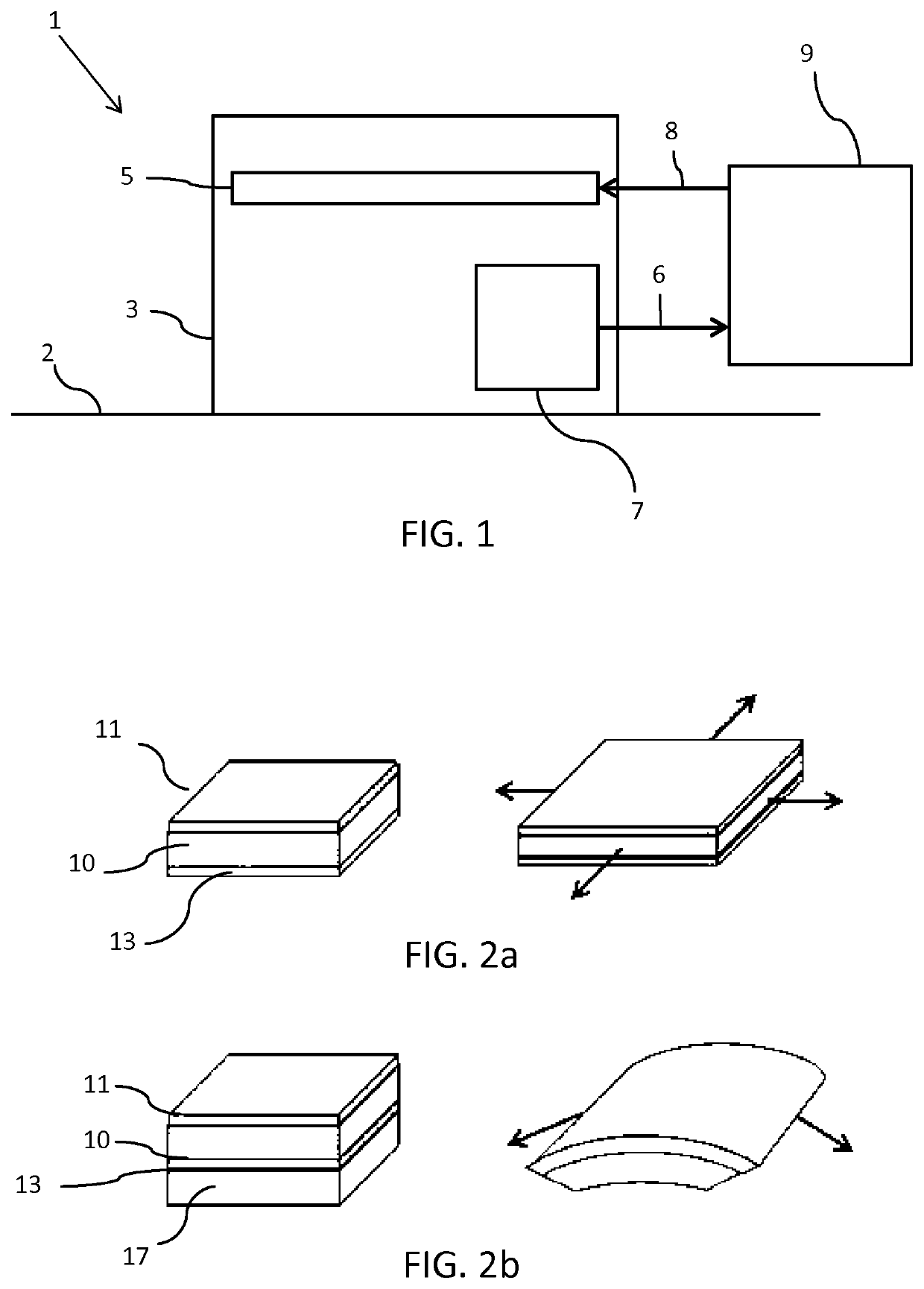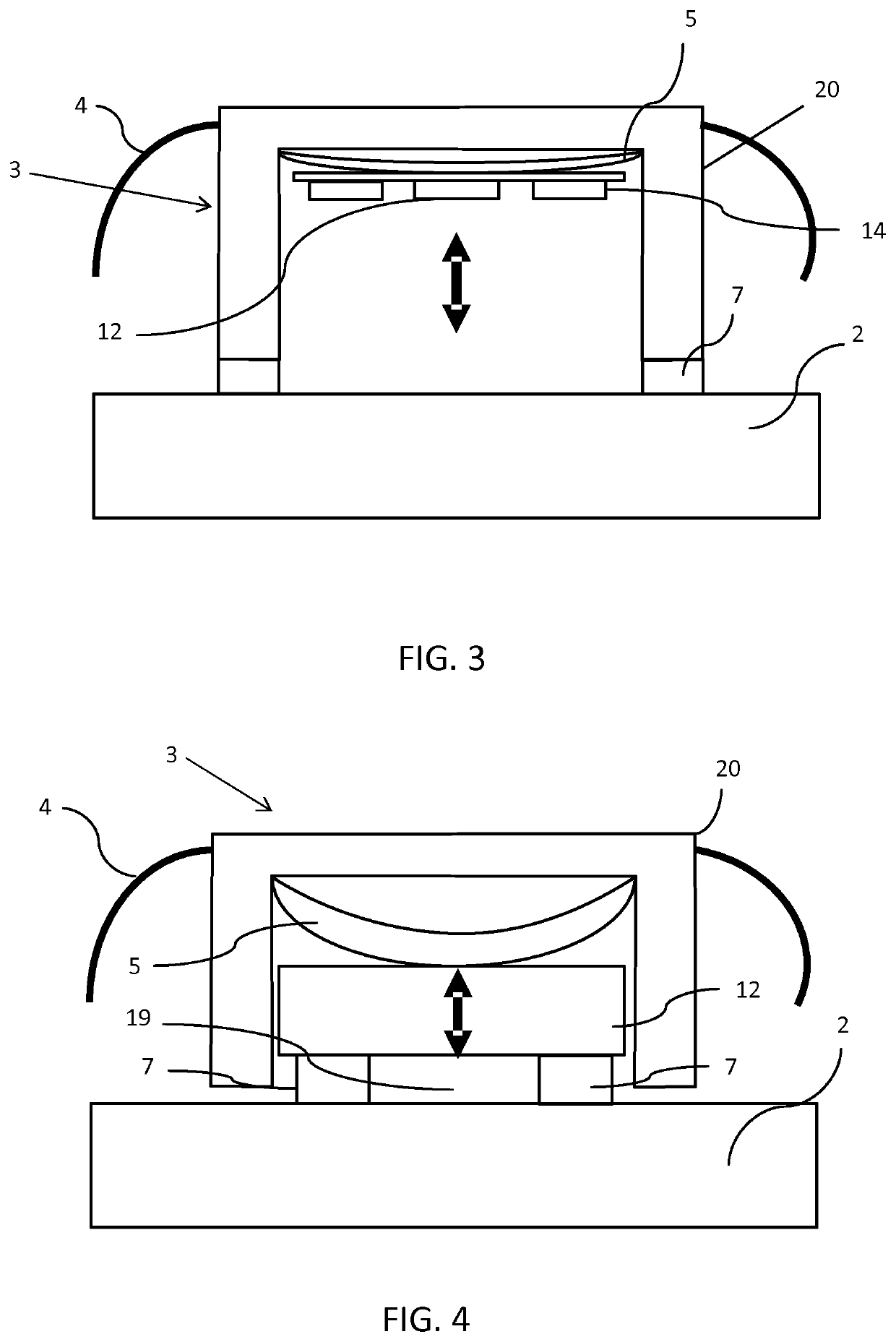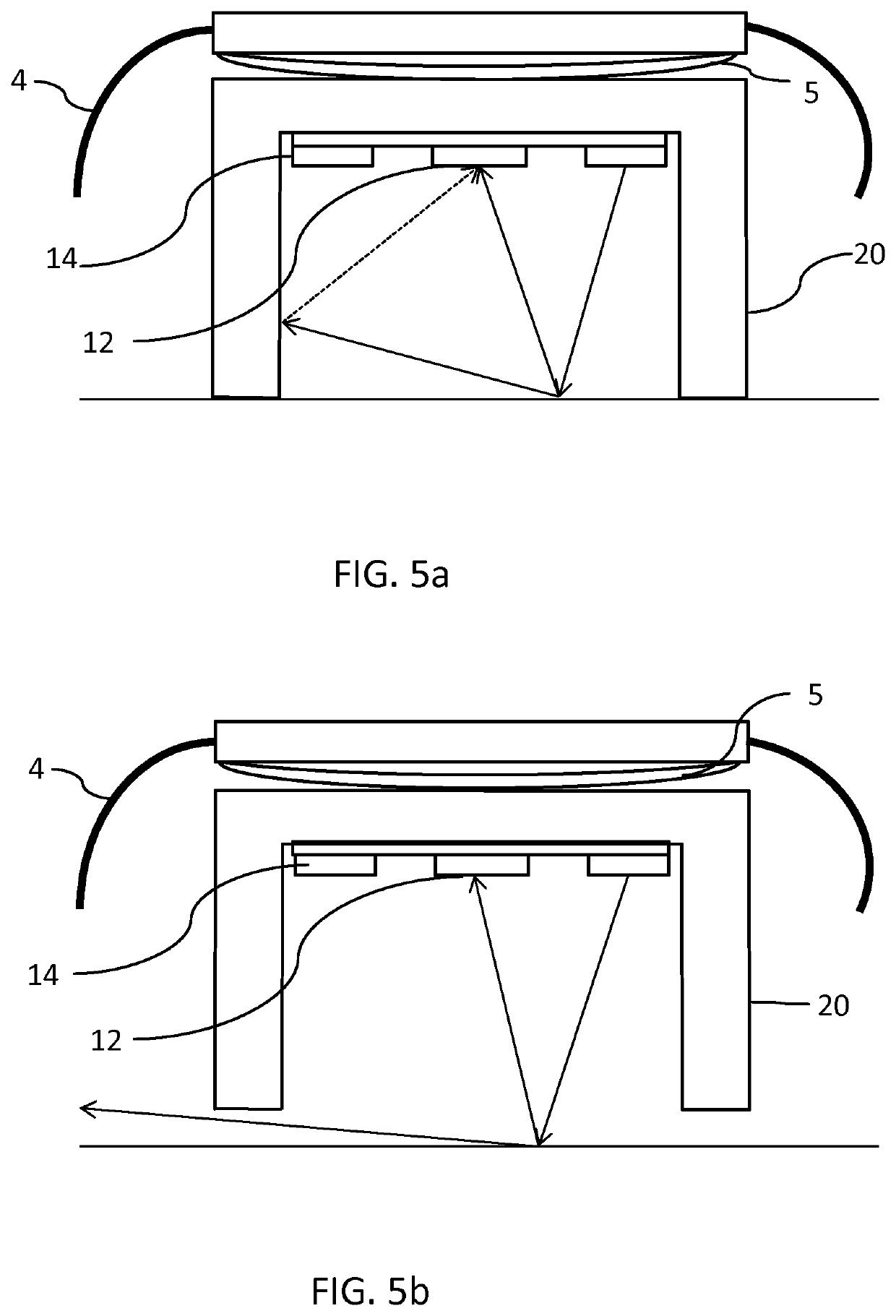Measuring of a physiological parameter using a wearable sensor
a wearable sensor and physiological parameter technology, applied in the field of physiological parameter measurement sensors, can solve the problems of motion artefacts, change in the relative position of wearable sensors, and inability to accurately calculate the poin
- Summary
- Abstract
- Description
- Claims
- Application Information
AI Technical Summary
Benefits of technology
Problems solved by technology
Method used
Image
Examples
Embodiment Construction
[0062]FIG. 1 is a schematic block diagram illustrating an apparatus 1 according to an example of the invention. The invention provides an apparatus 1 including a physiological parameter sensor 3 adapted to be worn by a subject; an actuator 5, comprising an electroactive polymer material, for adjusting the position of the physiological parameter sensor 3 relative to the subject 2; a feedback sensor 7 for measuring movement of the physiological parameter sensor relative to the subject and a controller 9 configured to process measurements of the feedback sensor 7 and to adjust the position of the actuator 5 based on information from the feedback sensor 7.
[0063]The feedback sensor 7 is arranged to detect relative movement of the physiological parameter sensor 3 with respect to the user's body 2. For example, the feedback sensor 7 may be a contact sensor arranged to detect if the physiological parameter unit is in contact with the subject. For example, the feedback sensor may be an optic...
PUM
 Login to View More
Login to View More Abstract
Description
Claims
Application Information
 Login to View More
Login to View More - R&D
- Intellectual Property
- Life Sciences
- Materials
- Tech Scout
- Unparalleled Data Quality
- Higher Quality Content
- 60% Fewer Hallucinations
Browse by: Latest US Patents, China's latest patents, Technical Efficacy Thesaurus, Application Domain, Technology Topic, Popular Technical Reports.
© 2025 PatSnap. All rights reserved.Legal|Privacy policy|Modern Slavery Act Transparency Statement|Sitemap|About US| Contact US: help@patsnap.com



